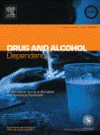| Titre : | Comparison between the WHO and NIAAA criteria for binge drinking on drinking features and alcohol-related aftermaths: Results from a cross-sectional study among eight emergency wards in France (2017) |
| Auteurs : | B. ROLLAND ; I. D. CHAZERON ; F. CARPENTIER ; F. MOUSTAFA ; A. VIALLON ; X. JACOB ; P. LESAGE ; D. RAGONNET ; A. GENTY ; J. GENESTE ; E. POULET ; M. DEMATTEIS ; P. M. LLORCA ; M. NAASSILA ; G. BROUSSE |
| Type de document : | Article : Périodique |
| Dans : | Drug and Alcohol Dependence (Vol.175, June 2017) |
| Article en page(s) : | 92-98 |
| Langues: | Anglais |
| Discipline : | EPI (Epidémiologie / Epidemiology) |
| Mots-clés : |
Thésaurus géographique FRANCEThésaurus mots-clés ALCOOL ; ABUS ; COMPARAISON ; ETUDE TRANSVERSALE ; QUESTIONNAIRE ; AUDIT ; PROFIL SOCIO-DEMOGRAPHIQUE ; TYPE D'USAGE ; DEFINITION |
| Résumé : |
Background: Binge drinking (BD) consists of heavy episodic alcohol use. Whereas the World Health Organization (WHO) defines BD as 60 g of alcohol or more per occasion, the National Institute on Alcoholism and Alcohol Abuse (NIAAA) conceives BD as drinking 70 g (men) or 56 g (women) in less than two hours. We compared the subjects delineated by each definition.
Methods: Eight-center cross-sectional study among 11,695 subjects hospitalized in emergency wards. Participants completed the Alcohol Use Disorders Identification Test - Consumption (AUDIT-C), CAGE and Rapid Alcohol Problem Screen 4 (RAPS4-QF) questionnaires. The WHO criteria were investigated using the RAPS4-QF. Independent questions assessed the NIAAA criteria. The main medical admission motive was noted. The characteristics of subjects meeting respectively: 1) the exclusive WHO criteria (BD1); 2) the NIAAA criteria (BD2); and 3) no BD criteria (noBD) were compared using multinomial regression analyses. Binary age- and gender-adjusted regression analyses directly compared BD1 and BD2. Subjects with at least four drinking occasions per week were excluded from the analyses, to withdrawn regular heavy drinking. Results: Compared to BD1, BD2 subjects were more frequently males (OR = 1.67 [1.39-2.0]), single (aOR = 1.64 [1.36-1.98]) and unemployed (aOR = 1.57 [1.27-1.90]). BD2 reported significantly more drinks per occasion, and higher heavy drinking frequencies. Previous alcohol-related remarks from family (aOR = 3.00 [2.53-3.56]), ever drinking on waking-up (aOR = 2.05 [1.37-2.72]), and admission for psychiatric motive (aOR = 2.27 [1.68-3.07]) were more frequent among BD2 subjects. Conclusions: Compared to WHO criteria, NIAAA criteria for BD delineate subjects with more concerning drinking patterns and alcohol aftermaths. |
| Domaine : | Alcool / Alcohol |
| Affiliation : | INSERM ERi24-GRAP, Université Picardie Jules Verne, Amiens, France |
 Accueil
Accueil




